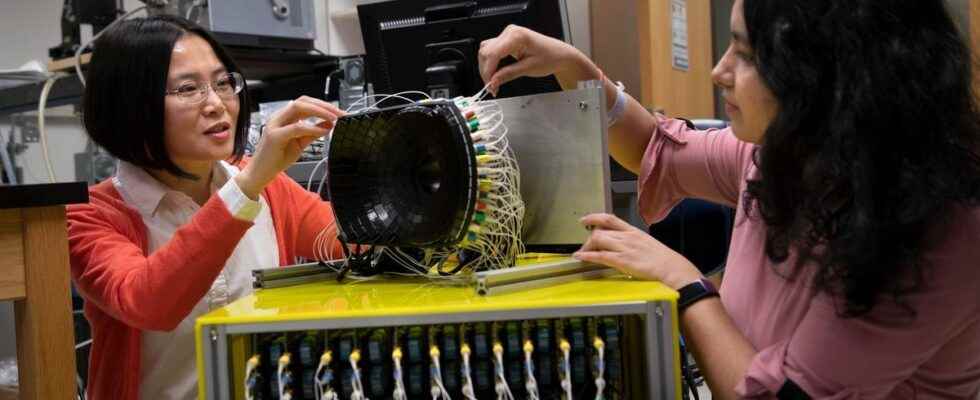Published ,
Reading 3 mins.
In the United States, researchers at the University of Michigan have developed a sound treatment capable of partially eliminating liver tumours. This feat achieved in animals could tomorrow change the treatment of certain cancers in humans.
A sound technology, developed by researchers at the University of Michigan (USA), has made it possible to partially eliminate tumors from the liver of rats. The sounds sent through the rodents killed the cancer cells and prompted the immune system to prevent further threats.
This breakthrough is a beacon of hope for human beings affected by liver cancer, since it is one of the 10 deadliest cancers in the world. Despite the various treatment options available for liver cancer, the prevalence of tumor recurrence and metastasis after initial treatment is high among patients. Hence the clinical need to improve the results.
Eliminate a part to better destroy the whole
In many clinical situations, the entirety of a cancerous tumor cannot be targeted directly in treatments, in particular because of the size, location or stage of the mass. To study the effects of the partial destruction of tumors by sound, the American researchers chose to target only part of the tumor, leaving behind a viable intact tumor.
The sound thus destroyed between 50 to 75% of the volume of liver tumors in rats. But after this “mechanical” action, the immune system eliminated the rest on its own. No cancer recurrence or metastasis was established in more than 80% of cases.
“Even if we don’t target the entire tumor, we can regress it and reduce the risk of future metastases”said Zhen Xu, professor of biomedical engineering at the University of Michigan and corresponding author of the study published in Cancer.
The results thus showed that the sound treatment had thus stimulated the immune responses of the rats, which would have contributed to the regression of the non-targeted part of the tumor and to the prevention of the spread of the cancer.
Consult an oncologist online
Sound wave therapy
How does this treatment work? How is it innovative? Called histotripsyit noninvasively focuses ultrasound waves to mechanically destroy target tissue with millimeter precision.
In medicine, typical ultrasound uses sound waves to see inside the body. Researchers at the University of Michigan, they went further: they used these ultrasonic waves not to prevent, but to cure.
“Our transducer, designed and built at the University of Michigan, delivers high-amplitude, microsecond-long ultrasound pulses – acoustic cavitation – to focus on the tumor in a specific way to break it up”said Zhen Xu. “Traditional ultrasound devices use lower amplitude pulses for imaging”.
Pulses lasting a few microseconds emitted by the transducer thus generate microbubbles in the targeted tissues, which expand and collapse rapidly. These mechanical stresses are violent but extremely localized, allowing cancer cells to be killed and the structure of the tumor to be broken down.
Unlike more common treatments for liver cancer (chemotherapy, radiation), side effects are non-existent. It is for this reason in particular that this technique is the subject of a trial on liver cancer in humans, in the United States and in Europe.
“Histotripsy is a promising option that can overcome the limitations of currently available ablation modalities and provide a safe and effective non-invasive solution for liver tumors”said Tejaswi Worlikar, a doctoral student in biomedical engineering. “We hope that the insights gained from this study will motivate future preclinical and clinical research on histotripsy, with the ultimate goal of clinical adoption of this treatment for patients with liver cancer”she concluded.
Since 2001, the University of Michigan laboratory has been “pioneer in the use of histotripsy in the fight against cancer”leading to the clinical trial #HOPE4LIVER sponsored by HistoSonics. More recently, the group’s research has yielded promising results on brain histotripsy treatment and immunotherapy.
